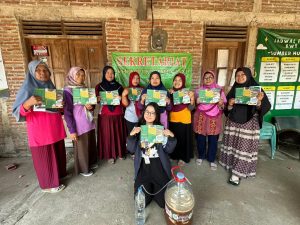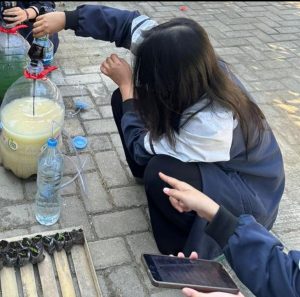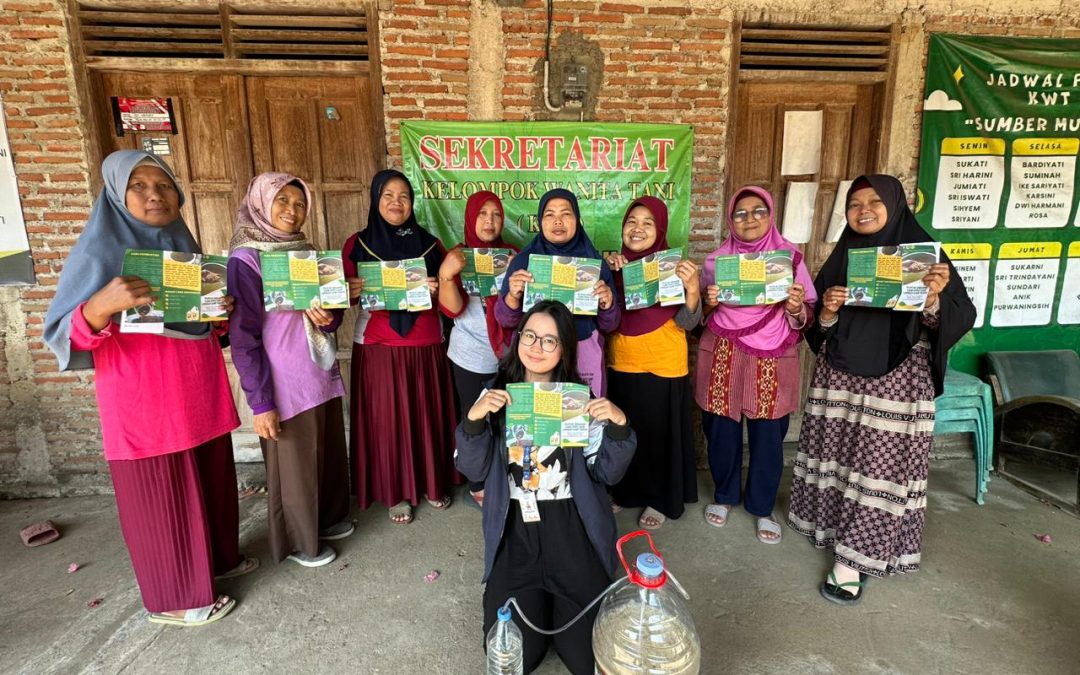Dukuh Tegalmulyo, Pojok Village – August 4, 2024
Tempe, as one of the products of MSMEs in Pojok Village, currently does not have an adequate liquid waste processing system. Liquid waste produced from the tempe production process is a significant environmental problem. As a fermented soybean product, tempe not only produces tempe as the main product but also liquid waste that can pollute the environment if not managed properly. Tempe liquid waste, which often contains various organic substances and microbes, has potential that has not been fully utilized in the context of waste management. One innovative solution to this problem is to process tempe liquid waste into Liquid Organic Fertilizer (POC).


On (04/08/2024), Regular KKN Team II Students of 2024 in Pojok Village, Tawangsari District, Sukoharjo Regency carried out a monodisciplinary program entitled “Utilization of Tempe Liquid Waste into Liquid Organic Fertilizer (POC)”. The program implemented by students of Industrial Chemical Engineering Technology, Faculty of Vocational School, focused on the Women Farmers Group (KWT) “Sumber Mulyo” in Pojok Village. This program was implemented starting with an introduction to liquid organic fertilizer and the potential of tempe liquid waste as fertilizer. Continued with a demonstration of making liquid organic fertilizer. The manufacturing process is to prepare a 15L gallon filled with half a gallon of tempe liquid waste from surrounding MSMEs. The additional ingredients are molasses / sugarcane drops which are rich in sugar, minerals, and vitamins which are a source of energy for microorganisms that play a role in the fermentation process. The next ingredient is yakult, because it contains probiotic bacteria, especially Lactobacillus Casei. These bacteria have an important role in the fermentation process and produce various compounds that are beneficial to plants. 300ml of molasses and 1 bottle of yakult are added to the gallon and stirred until evenly mixed. A hose is connected to the gallon cap to a bottle filled with water so that the fertilizer does not explode during fermentation. Fermentation is carried out for 7-14 days and the use of fertilizer by mixing a ratio of 200ml of POC and 800ml of water is then applied to vegetable plants. The demonstration activity was interspersed with a question and answer session and the participation of KWT was very enthusiastic and active in asking and finding out more. “This Liquid Organic Fertilizer is very good and can be applied to plants at home or in KWT. The ingredients are also easy to find and cheap, making it an economical and practical solution,” said Mrs. Dwi, Head of KWT. Handling of liquid tempeh waste is expected to reduce negative impacts on the environment, such as soil and water pollution that can damage the ecosystem. The “Utilization of Liquid Tempeh Waste into Liquid Organic Fertilizer (POC)” program is expected to be a sustainable program of the Pojok Village Women’s Farmer Group (KWT) and provide a positive example in managing liquid tempeh waste from surrounding MSMEs.


Recent Comments